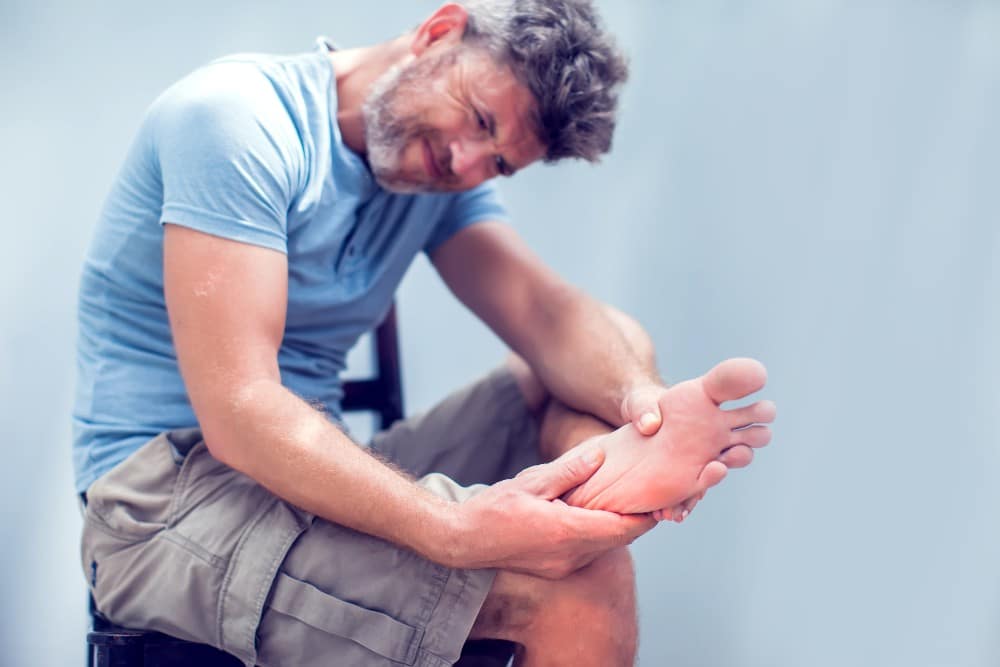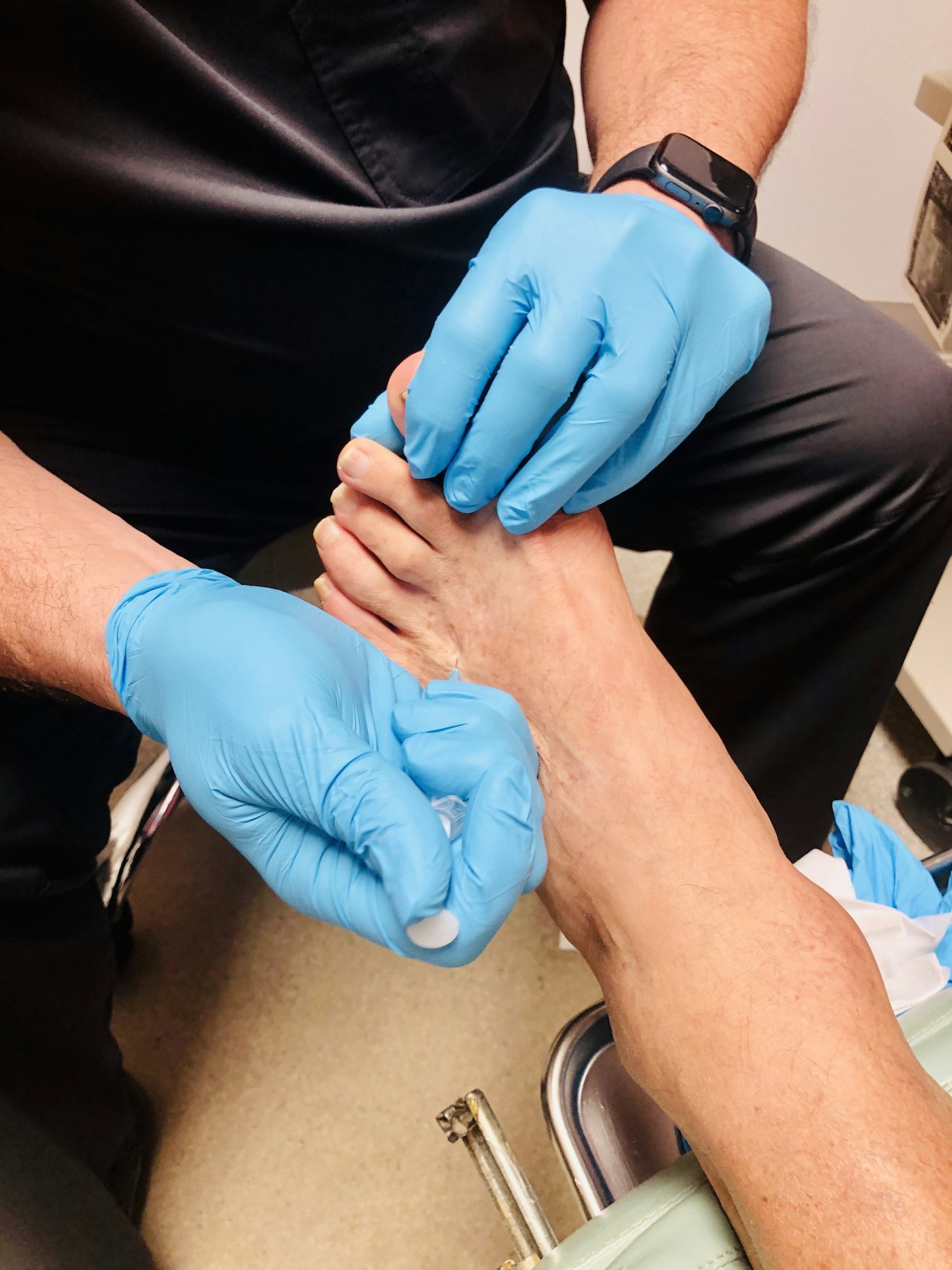Table of Contents
Introduction
Ah, the sweet freedom of running – wind in your hair, feet pounding the pavement, and…OUCH! A sudden heel pain crashes the party, throwing a wrench in your stride. It’s as if your heels are shouting, “Hey there, buddy! Can you give us a break?”
Well don’t worry, fellow pavement-pounders; we’ve got your back (or rather, your heels)!
In the high-stakes world of heel pain, we’ll be your trusty sidekicks. Together, we’ll dive into the mysterious realm of achy heels, unmasking those pesky villains that try to bring your running to a halt. We’ll arm you with remedies and strategies to kick heel pain to the curb and reclaim your running rhythm. So, lace up those sneakers and get ready for an action-packed adventure that will have you conquering the pavement once again, pain-free and full of pep!
Why You May Be Suffering From Heel Pain While Running
Flat Feet
Achilles Tendinitis
Plantar Fasciitis
Stress Fracture
Nerve Irritation

How to Treat Heel Pain After Running
When heel pain strikes, don’t let it hold you hostage! By following these trusty treatments, you’ll be on the road to recovery and back to pounding the pavement in no time.
Take breaks: First and foremost, give your heels some well-deserved rest. Taking breaks from running will allow your body to heal and recover. Remember, it’s better to have a few days off now than to be sidelined with pain for weeks or months.
RICE: The RICE method (Rest, Ice, Compression, and Elevation) is your go-to for treating heel pain. Rest your feet, apply ice to the affected area for 15-20 minutes several times a day, use compression to reduce swelling, and elevate your feet to minimize inflammation.
Nonsteroidal anti-inflammatory drugs: Over-the-counter pain relievers like ibuprofen or naproxen can help reduce pain and inflammation. Use them as directed and consult our doctors if your pain persists or worsens.
Change footwear if needed: Your shoes could be adding to or causing your heel pain. Make sure you’re running in shoes that provide proper support and cushioning. If your shoes are worn out or ill-fitting, it’s time to invest in a new pair that’ll keep your feet comfortable and pain-free.
Make sure to warm up before and cool down after runs: Warming up before you run helps prepare your muscles and joints for the workout ahead. Cooling down afterward helps prevent stiffness and promotes recovery. Both are essential for keeping heel pain at bay and ensuring a smooth, enjoyable running experience.
When to Get Professional Treatments
While most heel pain can be managed with at-home remedies, there are instances when seeking professional help is necessary. Don’t ignore your heel pain – it’s better to be safe than sorry!
If you’ve been diligently following the RICE method and taking over-the-counter pain relievers, but your heel pain persists or worsens, it’s time to consult our heel pain experts. They can help diagnose the underlying issue and recommend appropriate treatment options.
Professional Treatments for Heel Pain that Work
Custom Orthotics
Laser Therapy
Start Your Journey Toward Heel Pain Relief Today
Whenever you face a challenge like heel pain, it’s crucial to consult with healthcare professionals like Premier Podiatry & Orthopedics. We will provide a comprehensive assessment, including imaging tests if needed, and engage in a thorough discussion about your specific situation before recommending any treatment options. Understanding how your condition impacts your daily life allows our doctors to customize the most effective treatment plan for you.
If you’re experiencing heel pain or any other foot-related issue that requires expert care, don’t hesitate to schedule an appointment. You can easily reach out to us today by filling out an online contact form. Remember, your well-being is our top priority, and we are here to help you get back on your feet – literally!
Recovery and Rehabilitation
The duration of recovery and rehabilitation varies depending on the severity and underlying cause of the back-of-knee pain. Following the prescribed treatment plan, engaging in physical therapy exercises, and adhering to any lifestyle modifications are crucial for a successful recovery.
It’s essential to communicate openly with your healthcare provider throughout the recovery process. This includes reporting any changes in symptoms, discussing challenges faced during rehabilitation, and addressing concerns or questions about the recovery timeline.
Preventive Measures and Lifestyle Considerations
While some causes of back-of-knee pain are unavoidable, certain preventive measures and lifestyle considerations can contribute to maintaining optimal knee health:
- Warm-Up and Stretching: Prior to engaging in physical activities or exercise, ensure adequate warm-up and stretching to prepare the muscles and joints.
- Strength Training: Incorporate strength training exercises that focus on the muscles around the knee, including the quadriceps and hamstrings, to provide additional support and stability.
- Proper Footwear: Wear appropriate footwear, especially during physical activities, to provide adequate support to the feet and knees.
- Maintain a Healthy Weight: Excess body weight can exert additional stress on the knee joints. Maintaining a healthy weight can reduce the risk of developing knee-related issues.
- Stay Hydrated: Proper hydration is essential for joint health. Water helps lubricate joints and supports overall joint function.
- Listen to Your Body: Pay attention to any warning signs such as pain or discomfort during activities. If you experience pain, it’s crucial to modify or stop the activity to prevent potential injuries.
Conclusion
In conclusion, back-of-knee pain is a multifaceted issue that requires a comprehensive understanding of its anatomy, symptoms, causes, and treatment options. Whether the pain stems from injuries, ligament issues, meniscus tears, or underlying medical conditions, early intervention and personalized care are essential for a successful recovery.
If you are experiencing persistent back-of-knee pain, do not hesitate to seek professional medical attention. Our dedicated healthcare team is committed to providing individualized care, guiding you through the diagnosis, treatment, and recovery process.
Regaining control over your knee health involves active participation in your treatment plan, adherence to recommended exercises and lifestyle modifications, and open communication with your healthcare provider. With the right support and a proactive approach, you can overcome back-of-knee pain and reclaim a life of comfort and mobility.
Remember, your knee health is a crucial component of your overall well-being. Take the necessary steps today to ensure a pain-free and active tomorrow.
Looking to schedule an appointment with a physician?
Schedule an appointment with us by calling (916) 961-3434 or by clicking the button below to begin requesting your appointment today!



